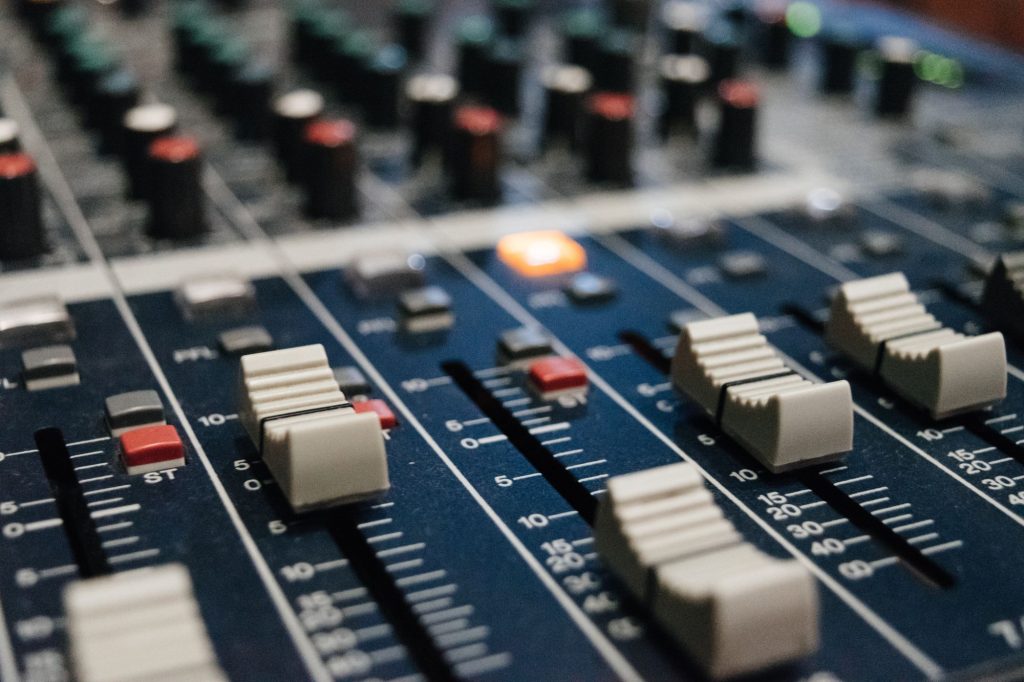Pretty much everyone is aware is of the fact that explicit content remains prevalent in every single form of music. Regardless of what genre you’re operating it, it can be rap, rock, country or pop.. there are always songs with explicit lyrics.
It’s important to know specifically what constitutes “explicit content” on major music platforms like Spotify and iTunes and to have a full understanding of what the consequences of having explicit content in your music are. That’ll help you prepare and figure out the best way to distribute your music if you want to avoid any penalties or issue.
Let’s take a look at what exactly constitutes explicit content on some of the major music streaming platforms, such as Spotify or iTunes. We’ll also take a look at the consequences of having explicit content marked on your account or song, and discuss the best way to operate when it comes to creating and distributing music with explicit content.
What exactly is explicit content in music?
We can define explicit content as anything that would be considered inappropriate for children or censored in any way. This includes but is not limited to:
- Swearing
- Graphic violence
- Nudity
- Drug use
While some people may argue that certain topics like drugs and violence can be discussed in an educational way, most major platforms err on the side of caution when it comes to explicit content.
This is because they have a wide audience to cater to, and need to be mindful of the fact that not everyone wants to hear or see such content.
The difference between prohibited and explicit content
It’s super important to understand the difference between prohibited and explicit content.
Prohibited content is anything that goes against the terms of use for a particular platform, and as a result, will get you banned from using that platform if you’re found to be sharing it.
Some examples of prohibited content include:
- Child pornography
- Racism
- Hate speech
- Threats of violence
Explicit content, on the other hand, is not necessarily against the terms of use for a platform – but may be flagged as such by users.
For example, iTunes has a setting that allows users to flag songs as “explicit” if they contain swearing or other offensive content.
This doesn’t mean that those songs are automatically banned from iTunes – but it does mean that they will be labeled as explicit, and will require an extra click from the user to play them.
The same is true for platforms like Spotify and YouTube Music – users and creators can flag songs as explicit, but they are not automatically banned from the platform.
This is a massive difference as the triggers for prohibited content and explicit content are not the same. You will have to respect the ToS in order to avoid releasing tracks with prohibited content, but you must also factor in the audience perception if you want to avoid getting labeled as explicit content.
What are the possible downsides of producing explicit content?
The most obvious downside is that your music may be censored or banned from certain platforms. This will limit your audience, and make it harder for people to find and listen to your music.
Most major media platforms have a strict policy against explicit content. This means that if you want to get your music onto Spotify, iTunes, YouTube Music or any other major platform, you need to make sure that it is suitable for a wide audience.
As a result, artists who create music with explicit content are often faced with the decision of whether to release a censored or edited version of their song or to keep the original and risk having it demonetized or removed from major platforms altogether.
There are a few things to consider when making this decision, such as the type of content in question and how important it is to the song as a whole.
For example, if a song contains limited explicit language but is otherwise non-offensive, it’s likely that the censored version will be just as effective.
On the other hand, if a song’s explicit content is integral to its meaning or message, then the artist may choose to release it uncensored and accept whatever consequences come with that decision.
Ultimately, it’s up to the artist to decide what’s best for their music and their career. However, having a full understanding of what constitutes explicit content on the major platforms is crucial in making that decision.
What does Spotify consider explicit content?
Spotify defines explicit content as “any tracks with profanity or mature/suggestive themes.”
This can include but is not limited to, songs with swear words, sexual innuendos, and drug references.
Tracks that are marked as explicit will have a warning message displayed on their page on the Spotify app. Users will have to confirm that they are over the age of 18 before they can play the track.
If you’re an artist distributing music on Spotify, you can mark your tracks as explicit or non-explicit when you submit them to the platform.
What are the consequences of being marked as explicit on Spotify?
For starters, your music will not be included in some of Spotify’s editorial playlists.
These are the lists that are hand-picked by Spotify’s team and can be a great way to get your music in front of new listeners.
In addition, your tracks may not be promoted on the platform as heavily as non-explicit tracks.
So if you’re trying to get your music heard on Spotify, it’s generally best to avoid having explicit content in your tracks.
Of course, this isn’t always possible or desirable, so it’s ultimately up to you as the artist to decide what’s best for your music.
However, being marked as explicit doesn’t mean Spotify won’t host your music or allow listeners to access it – it just means that it’s not as easily discoverable as other tracks on the platform.
It also means that users will have to manually confirm that they are over the age of 18 before they can play the track.
It does without saying that being marked as explicit on Spotify comes with automatic limiting of the reach of your music. While this may boost your appeal occasionally, depending on the perception and preferences of your audience, in general – it does substantially limit your promotion options.
What does iTunes consider explicit content?
iTunes has a more lenient policy when it comes to explicit content in music, and as such, only imposes age restrictions on certain tracks.
This is determined by the presence of certain words or themes in the song’s lyrics, and not by the overall tone or theme of the track.
These words and themes include, but are not limited to, violence, drugs, sex, and profanity.
iTunes uses a system of “parental advisory” labels to indicate which tracks contain explicit content.
These tracks are still available for purchase and download, but users will need to confirm that they are over the age of 17 before they can do so.
In general, iTunes is often perceived as less strict than Spotify and other music streaming platforms.
What are the consequences of being marked as explicit on iTunes?
As mentioned, iTunes has a more lenient policy when it comes to explicit content.
They use a parental advisory label, which means that the track is still available for purchase and download. However, other than the addition of the parental advisory label, they don’t take any steps to restrict the track.
However, users will need to confirm that they are over the age of 17 before they can do so.
This policy limits the impact of a track being marked as explicit, as it is still available for purchase and download.
The main consequence of being marked as explicit on iTunes is that the track will be labeled accordingly, which may deter some users from purchasing or downloading it.
What does YouTube Music consider explicit content?
YouTube Music is more stringent when it comes to what they deem as explicit content.
They take into account the overall tone and theme of the track, as well as the presence of certain words or themes in the song’s lyrics.
Some examples of words and themes YouTube Music considers to be explicit are:
- Profanity
- Violence
- Drugs and alcohol
- Sexual content
As such, tracks that are considered explicit will be age-restricted and only available to listeners who are over the age of 18.
The use of themes to determine whether a track is explicit or not widens the possible range of tracks that could be flagged as such.
For example, a song about heartbreak could be considered explicit if it features profanity or sexual content.
On the other hand, a track with no profanity or references to drugs and alcohol could still be considered explicit if its lyrics are particularly violent.
What are the consequences of being marked as explicit on YouTube Music?
The main consequence is that your track will be age-restricted, which means that it will not be available to listeners who are under the age of 18.
This could limit your audience and make it difficult for you to get your music out there.
It’s important to remember that you can still distribute your music even if it is marked as explicit. You just have to be aware of the limitations of YouTube Music as a platform and work within them.
What does Soundcloud consider explicit content?
When it comes to what Soundcloud considers explicit content, there is a lot of grey area. In general, anything that could be considered offensive or NSFW (not safe for work) will be flagged as explicit. This includes but is not limited to:
- Swearing
- Graphic violence
- Nudity
- Drug use
- Sexual content
This is why it’s important to be mindful of the language you use in your lyrics and make sure that you’re not using any words or phrases that could potentially get your track flagged.
If the explicit content is core to the theme of the music, and the music is targeted at mature audiences, you can simply check the box that says ‘Contains explicit content’ on your Content Settings page.
This will prevent the marked content from being played on certain devices, to certain audiences, and in certain countries.
What are the consequences of having explicit content on Soundcloud?
The main consequence of tagging your content as explicit on Soundcloud is that it limits the reach of your music.
Your track will not be able to be played on devices that are set to filter out explicit content, it won’t be included in certain curated playlists, and it may not be available in certain countries.
However, if you feel that your track is appropriate for an older audience or you’re comfortable with its reach being limited, then tagging it as explicit may not be a big deal.
It’s ultimately up to you as the creator to decide whether or not you want to flag your content as explicit. Just remember that doing so may limit its potential reach.
How best to create and distribute explicit content
There’s no such thing as good or bad in the context of creating music with explicit content. Artists ought to express their creative ideas regardless of being with an explicit content label.
However, it’s important to know whether or not your music is likely to be labeled as explicit content.
Knowing and understanding the potential labeling of your content will allow you to be strategic about its release.
Releasing an album with several tracks that are all explicit can sometime mean that the entire project is filtered out on some platforms.
In this case, you may want to consider releasing a “clean” version of the album alongside the explicit one.
This gives fans the option to listen to the content they want, while still allowing you to make your project available to a wider audience.
It’s also worth noting that some platforms allow for explicit content to be marked as such, without filtering it out entirely.
This means that users will have to actively seek out this type of content, but it may still be accessible to them if they so choose.
In this guide, we’ve provided an overview of explicit content on various music streaming platforms. Make sure to always check the platform’s guidelines to ensure that you’re not violating their Terms of Service, and to understand the consequences of having your content labeled as “explicit content” on each platform specifically.



